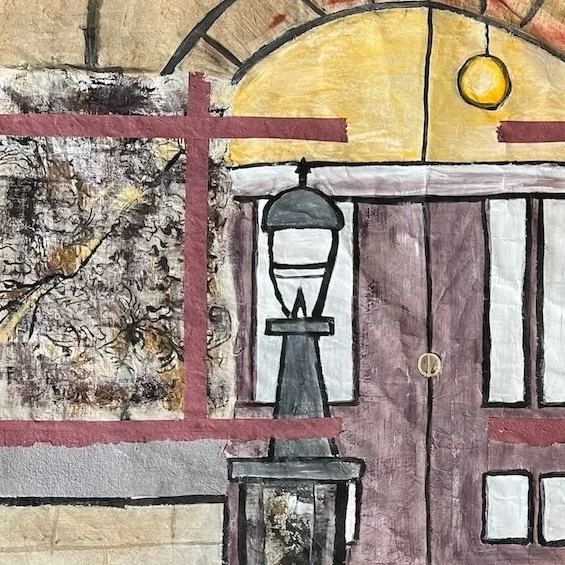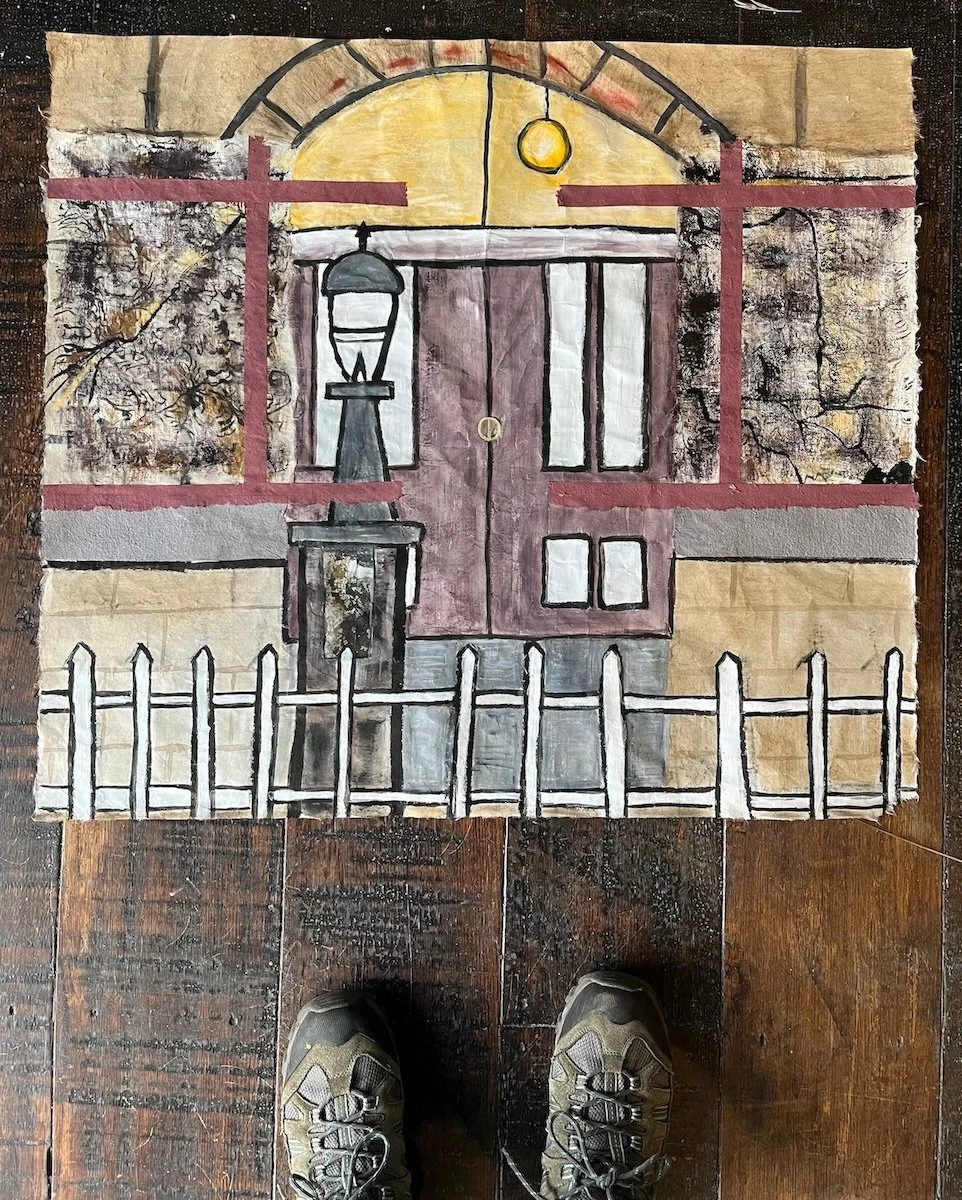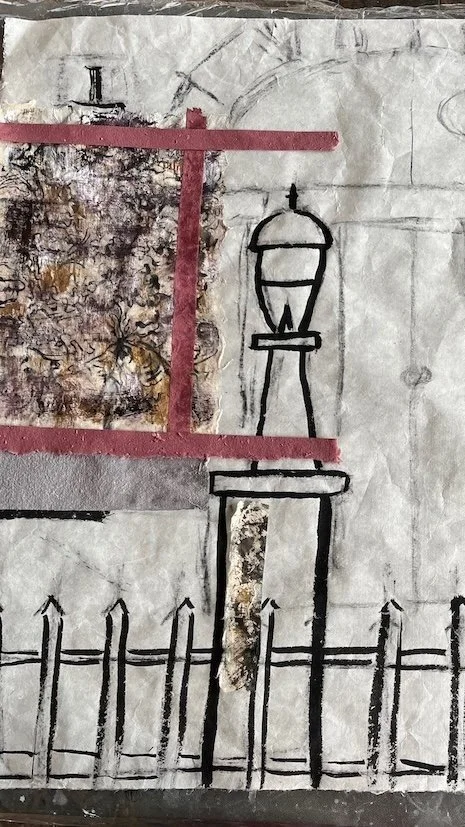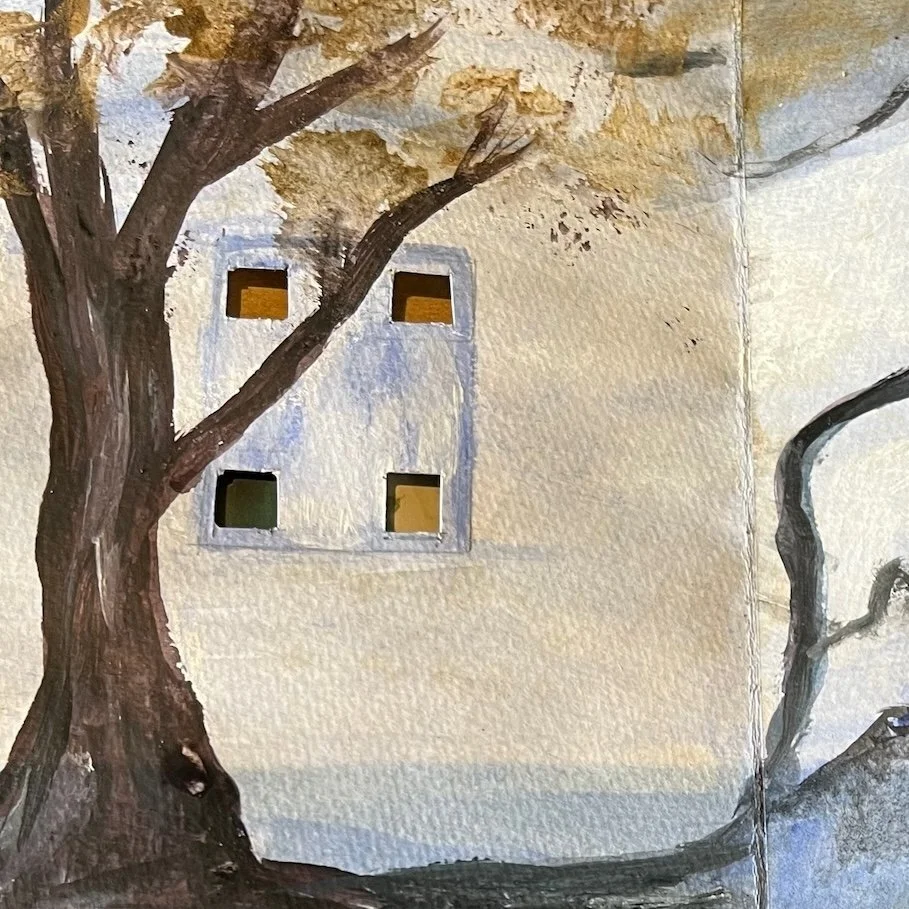Shining a Light
Cracks in the Edifices: that’s where the light gets in, Oatlands, Tasmania.
I’ve been thinking about cracks and fragments, wobbly lines and commitment. It can seem like a jumble of disparate ideas all jostling around in my head, yet they are finding ways to come together during this artist residency.
This week I was shown a library archive of fragmented pieces of wallpaper which has been scavenged from falling down houses, old pubs and demolition sites. One of the Southern Midlands heritage staff has lovingly pieced together tiny scraps of wallpaper to recreate the original designs. He then hand drew these designs, turned them into screenprints and printed replicate wallpapers for some of the restored council buildings.
I’m fascinated by the way the layers of history are revealed in the successive overlayering of papers, how the tastes and ideas of the colonial inhabitants manifests in their choice of colours and patterning.
I’ve taken liberties with these patterns and used some of them as backgrounds for interior views through the colonial windows which are in the old stone buildings. These torn off papers and cracks in the plaster on the walls had me thinking of the song by Leonard Cohen “There is a crack, a crack, in everything. That's how the light gets in.”
All along the high street are beautiful lamposts which wouldn’t look out of place in a London streetscape. At night they glow golden in the winter mist. I’ve wanted to capture those vertical lines and commit to them on paper.
This residency has given me an opportunity to be more bold. I brought with me long banners of kozo paper I bought in Japan as well as the ones I made myself during a papermaking workshop in the Japanese mountain village of Oguni. I also bought two beautiful but not too expensive Japanese calligraphy ink brushes.
To be bold I have had to commit to the lines I first draw up with charcoal then go over in black ink. It’s been a bit scary but incredibly liberating to know that once those lines are down, I have to work with them, even if they are wobbly and wonky. It’s helped me rethink the way I enter a landscape, through my feelings rather than just my eyesight.
It’s also allowed for big gestures. All of which are needed to commit to post-colonial thinking and finding a way through the darkness of history to shine a light on the way to go forward. Hence the prevalence of lights, lamposts and cracks for light to shine through.
As I near the end of the residency, I feel incredibly grateful for having been here, in this place and time in history. To know some of what happened in Tasmania during the ‘forgotten wars’ and to feel like I have had a part in bringing history out into the light where the healing can start to take place. It is a slow process, but I am confident that Tasmania will begin to lead the nation on truth telling. It is an ongoing narrative that has to happen.
Committing to the linear drawing - work in progress for the Edifices artwork
Shining a Light on History - work in progress






